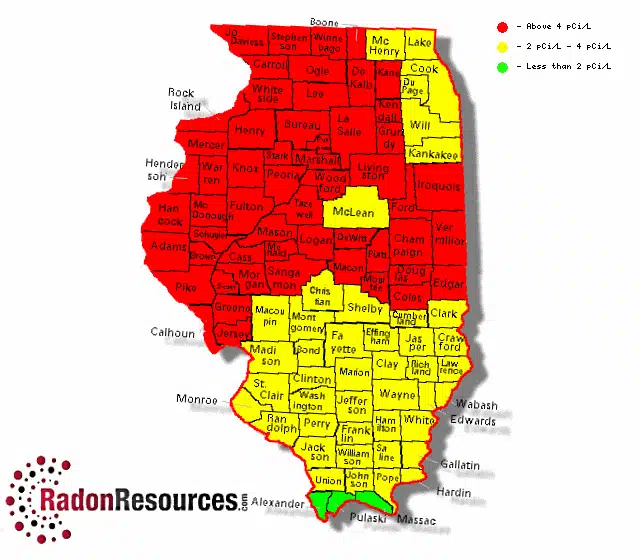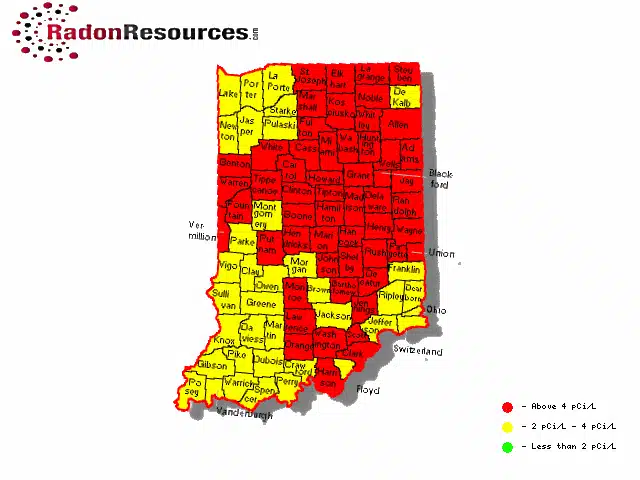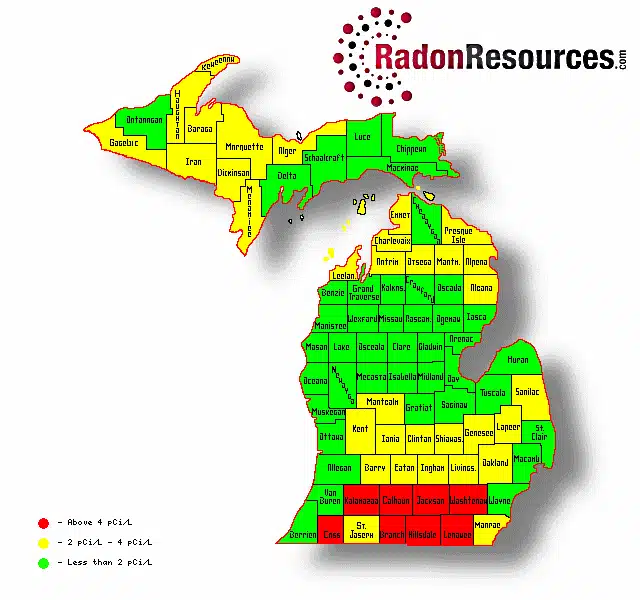Radon
What is a Safe Level of Radon?
Before we can answer the question "What is safe?" we must know how Radon is measured. Let's begin by asking the question: What are "picoCuries"(pronounced pi"ko-ku´re)?
The concentration of radon gas is not measured directly but rather by the radioactivity it produces. This radioactivity is expressed in picoCuries per liter of air, or "pCi/L". A Curie is a unit of radioactivity equivalent to 1 gram of radium and the prefix "pico" means a trillionth. In an average basement, 38 million atoms will undergo radioactive decay each hour.
SO, WHAT IS SAFE? PER THE EPA: "There is No Safe Radon Level!"
The U.S. Congress studied the risk to public health and set the "target" radon level for homes (The "Radon Act")as an outdoor level. Then, considering the high cost of fan radon mitigation, the US EPA issued more relaxed guidelines for homeowners:
Radon Guidelines for Homeowners
0.4 pCi/L is the "target" level for homes (The U.S. Congress)
2 pCi/L EPA's "consider action" limit - consider fixing your home!
4 pCi/L EPA's "action" limit - fix your home!
It is difficult for people to accept that their home, a place that one looks to for security, is hiding invisible danger. Yet, the average person receives a higher radiation dose from radon at home than from all other natural or man-made sources combined.
Outdoor radon levels in the U.S. range from 0.02 to 0.75 pCi/L (picoCuries per liter), averaging 0.4 pCi/L. But homes draw concentrated radon gas from the ground. Because radon is nine times heavier than air, elevated radon levels generally build up in basements and on lower floors. Although the U.S. Congress has set the natural radon concentration outdoors as the target level for homes, approximately two thirds of homes exceed it. A half of American homes have a radon level above 0.67 pCi/L (the median level). The average (mean) radon level in US homes is 1.25 pCi/L, or three times higher than the average level outdoors.
Nearly 8 million US homes, or 1 out of every 15, have radon levels above the EPA's 4 pCi/L "action" limit and nearly 1 out of 6 exceed the EPA's 2 pCi/L "consider action" limit. You should always try to reduce radon to a practical minimum - if you just settle for 4 pCi/L, your home will be more radioactive than 94% of US homes. The cancer risk is proportional to the radon level. Always reduce your radon level to a practical minimum! Reducing radon from your current level by 50% (or 80%) lowers the cancer risk to each member of your family by 50% (or 80%).
Health Effects of Radon
Radon is the number one cause of lung cancer among non smokers
Radon is the number one cause of lung cancer among non-smokers, according to EPA estimates. Overall, radon is the second leading cause of lung cancer. Radon is responsible for about 21,000 lung cancer deaths every year. About 2,900 of these deaths occur among people who have never smoked. On January 13, 2005, Dr. Richard H. Carmona, the U.S. Surgeon General, issued a national health advisory on radon. Visitwww.cheec.uiowa.edu/misc/radon.html for more on a study by Dr. William Field on radon-related lung cancer in women and http://www.surgeongeneral.gov/pressreleases/sg01132005.html to read a press release by the surgeon General.
Need a Radon Test? Get started today!
Request your Commercial, Daycare/Preschool, or Home Radon Test Now!



Need a Radon Test? Get started today!
Request your Commercial, Daycare/Preschool, or Home Radon Test Now!
